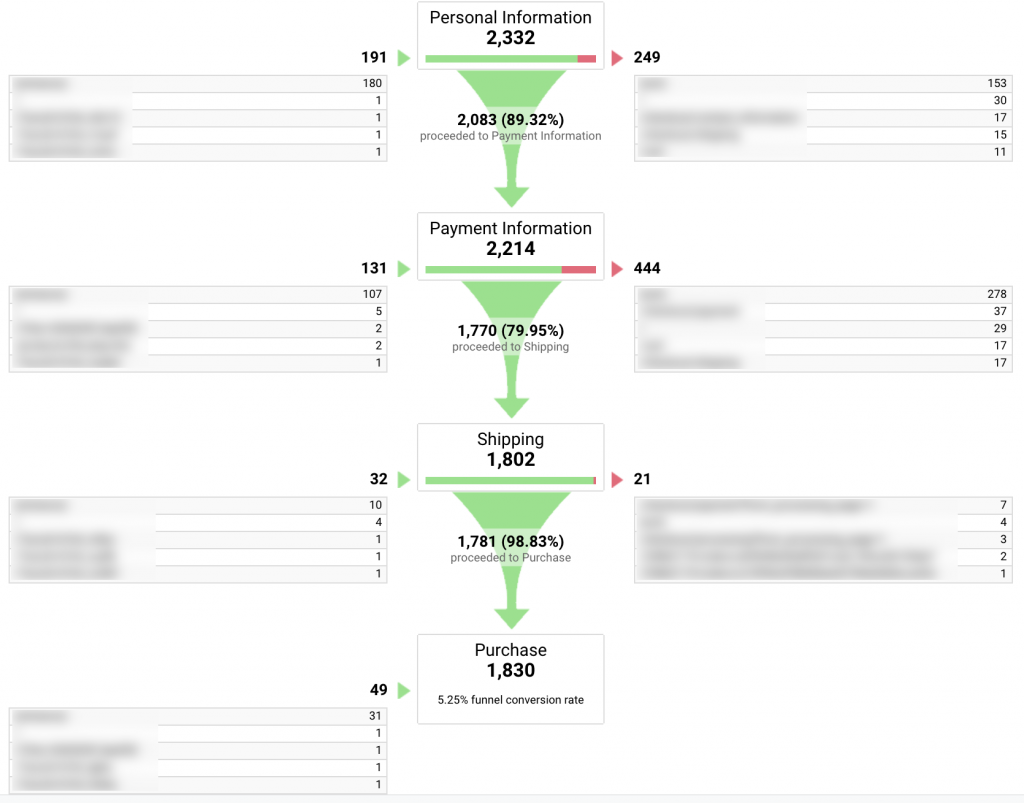What Data Is Google Analytics Goals Unable to Track: A Total Guide
What Data Is Google Analytics Goals Unable to Track: A Total Guide
Blog Article
Debunking Google Analytics Limitations: Reveal What Data Goals Can not Track
In the world of electronic analytics, Google Analytics stands as an effective tool that gives important insights into website efficiency and customer behavior. From the complexities of individual communication with vibrant material to the intricacies of cross-device individual journeys, these restrictions shed light on locations that might stay obscured from standard analytics perspectives.

Individual Interaction With Dynamic Web Content
Customer interaction with dynamic web content plays an essential duty in understanding individual habits on websites and optimizing the general customer experience. Dynamic material describes components on a web page that can transform without the requirement for a complete web page reload. This consists of interactive elements such as pop-ups, sliders, forms, and videos that reply to user actions in real-time. By tracking user interactions with vibrant content, internet site proprietors can gain beneficial insights into individual engagement, preferences, and habits.
Google Analytics uses numerous tools to track individual interactions with dynamic material, such as event tracking and online pageviews. Occasion monitoring enables you to check certain customer activities, like clicking a switch or viewing a video, giving data on how customers connect with vibrant components.
Cross-Device User Journeys
Just how can modern analytics tools track the facility paths users take across several devices in their on-line trips? Cross-device user trips offer a substantial obstacle for tracking and evaluating user behavior properly. As users engage with applications or websites making use of numerous gadgets such as desktop computers, smartphones, and tablets, it becomes vital to understand how they move in between these platforms to optimize user experience successfully.
Google Analytics deals with constraints in tracking cross-device individual journeys as a result of privacy concerns and technological restrictions - what data is google analytics goals unable to track. While it can supply insights into private devices' interactions, tracking a seamless user trip across multiple gadgets stays a challenge. This restriction can lead to incomplete data and fragmented customer insights, making it hard for organizations to create a unified view of the consumer journey
To address this issue, organizations can make use of advanced analytics tools that supply cross-device tracking abilities, enabling them to obtain an extra all natural understanding of user actions. By leveraging these tools, organizations can link the space in tracking cross-device customer trips and optimize their digital approaches for a smooth user experience.
Offline Conversions and Attribution
As services navigate the challenges of tracking cross-device user journeys, another crucial aspect to think about is the world of offline conversions and acknowledgment in the realm of information analytics. While Google Analytics provides valuable understandings into on the internet individual actions, it fails when it pertains to tracking conversions that occur offline. This constraint presents a substantial difficulty for businesses that have both online and offline sales networks.
Offline conversions, such as acquisitions made in physical stores or via telephone call facilities, are essential to recognizing the full customer trip. Without the capability to associate these offline conversions to details online communications, businesses may have a hard time to properly determine the influence of their electronic advertising and marketing initiatives.
To resolve this space, services can explore different options such as integrating CRM systems with online analytics tools or making use of special promo codes that can be traced back to online projects. By linking the space in between online and offline data, companies can gain a more detailed understanding of their clients' habits and boost their overall advertising and marketing techniques.
Individual User Identification
In the world of information analytics, the ability to precisely identify specific users across various on-line touchpoints is a vital challenge for services looking for to customize and enhance their advertising and marketing methods. While Google Analytics gives beneficial understandings into user behavior and communications, it falls short in making it visit our website possible for the recognition of certain people because of personal privacy problems and technical limitations. Google Analytics utilizes special identifiers such as cookies to track individual sessions and actions, but these do not equate to recognizing individual users in an individual feeling.

Data From Secure Pages
In spite of the enhancing occurrence of safe web pages on websites, acquiring information from these encrypted sources offers an unique difficulty for electronic analytics systems like Google Analytics. Protect pages, shown by HTTPS in the link, encrypt information exchanged in between the customer's internet browser and the web site's web server to make certain privacy and security. While this file encryption is crucial for securing sensitive info, it likewise presents restrictions for tracking individual habits and gathering analytics data.
Google Analytics faces challenges in accumulating in-depth information from protected web pages due to the encryption methods in position. Therefore, particular information this link factors such as reference resources, keyword searches, and also some user interactions may not be totally recorded when users access a site through a protected connection. This restriction can influence the precision and completeness of the data analysis, resulting in spaces in comprehending user habits and choices on safe and secure pages.
To navigate this obstacle, digital experts may require to explore different tracking approaches or leverage other devices specifically made to collect insights from safe web pages. By adapting approaches to accommodate these limitations, companies can still acquire important analytics despite the constraints offered by encrypted links.
Final Thought
To conclude, Google Analytics has limitations in tracking individual interaction with vibrant material, cross-device customer journeys, offline conversions, specific user identification, and information from secure web pages. These restrictions impede a thorough understanding of user actions and might bring about gaps in information analysis. In spite of its useful understandings, Google Analytics may not supply a full photo of individual involvement across various touchpoints. It is necessary for services to be mindful of these restrictions and take into consideration supplementary tools for a much more alternative view of their information.
Customer communication with dynamic material plays an essential function in comprehending individual actions on web sites and optimizing the overall individual experience. By tracking individual interactions with vibrant content, website owners can acquire beneficial insights right into individual engagement, choices, and actions.
Google Analytics uses distinct identifiers such as cookies to track individual sessions and behavior, however these do not relate to determining specific users in a personal feeling.
As a result, specific information points such as recommendation resources, keyword searches, and even some user communications may not be fully caught when individuals access an internet site with a secure connection.In verdict, Google Analytics has constraints in tracking user communication with dynamic content, cross-device individual journeys, offline conversions, individual user recognition, and information from safe web pages.
Report this page